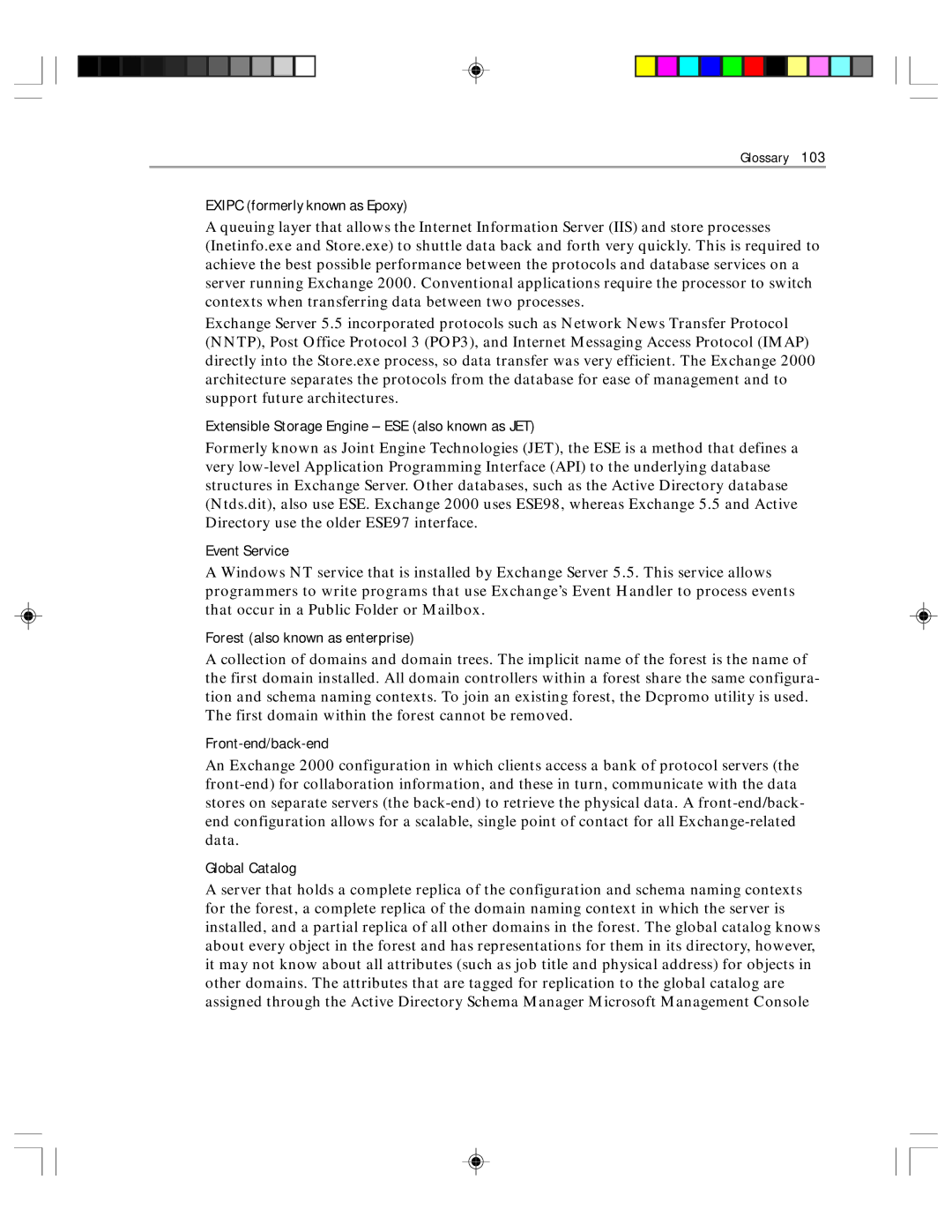
Glossary 103
EXIPC (formerly known as Epoxy)
A queuing layer that allows the Internet Information Server (IIS) and store processes (Inetinfo.exe and Store.exe) to shuttle data back and forth very quickly. This is required to achieve the best possible performance between the protocols and database services on a server running Exchange 2000. Conventional applications require the processor to switch contexts when transferring data between two processes.
Exchange Server 5.5 incorporated protocols such as Network News Transfer Protocol (NNTP), Post Office Protocol 3 (POP3), and Internet Messaging Access Protocol (IMAP) directly into the Store.exe process, so data transfer was very efficient. The Exchange 2000 architecture separates the protocols from the database for ease of management and to support future architectures.
Extensible Storage Engine – ESE (also known as JET)
Formerly known as Joint Engine Technologies (JET), the ESE is a method that defines a very
Event Service
A Windows NT service that is installed by Exchange Server 5.5. This service allows programmers to write programs that use Exchange’s Event Handler to process events that occur in a Public Folder or Mailbox.
Forest (also known as enterprise)
A collection of domains and domain trees. The implicit name of the forest is the name of the first domain installed. All domain controllers within a forest share the same configura- tion and schema naming contexts. To join an existing forest, the Dcpromo utility is used. The first domain within the forest cannot be removed.
Front-end/back-end
An Exchange 2000 configuration in which clients access a bank of protocol servers (the
Global Catalog
A server that holds a complete replica of the configuration and schema naming contexts for the forest, a complete replica of the domain naming context in which the server is installed, and a partial replica of all other domains in the forest. The global catalog knows about every object in the forest and has representations for them in its directory, however, it may not know about all attributes (such as job title and physical address) for objects in other domains. The attributes that are tagged for replication to the global catalog are assigned through the Active Directory Schema Manager Microsoft Management Console
